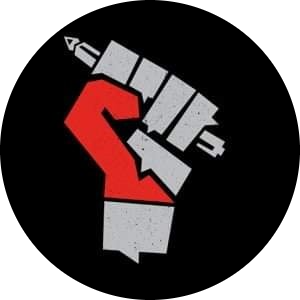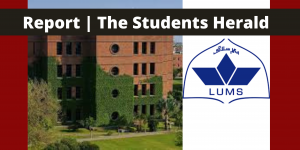The outbreak of coronavirus has shattered people’s social and economic life badly, infecting more than 1 billion people and causing death to around 2.6 million all across the world. COVID-19 is reshaping the world’s cultural, political, social, and economic matters. Among these, the economy is the prime concern of every country. The pandemic has shaken the world’s economy to such extents that even the first world economies could not escape financial downfall not to speak of Pakistan. Just before the outbreak of this virus, for Pakistan, during the fiscal year 2020, around a 2.5% economic growth rate was being projected but the economy had gone negative as the worldwide trade continues to shrink, industries had been shut down and domestic economic activities had been frozen.
To comprehend this economic downturn, understanding the fundamentals of Pakistan’s economy is essential. According to the Pakistan Economic Survey 2018, the structure of Pakistan’s economy is based on three major components: services, agriculture, and industry.
1. The industrial sector comprises two subsectors-large scale manufacturing and small scale manufacturing-is the third-largest pillar of Pakistan’s economy that shares one-fifth of the GDP.
2. Agriculture, a few years ago was considered to be the backbone of Pakistan’s economy due to its massive size, but now it is in the second position with a share equal to that of the industry in the GDP.
3. The services sector like that of other countries is the largest one in Pakistan. It is growing with a share of around 50% in the GDP.
Having understood the fundamentals of Pakistan’s economy, it is quite clear that the COVID-19 has not only infected people but also the economy. To minimize is spread of COVID-19 the lockdown was imposed that froze not only the industry and employment but also international trade.
Pakistan’s industrial sector has been shrinking since the fiscal year 2019, and the imposition of lockdown at that time shook the industry badly. Small-scale manufacturing, a sub-sector of the industrial sector, could not bear the economic shock and became bankrupt. At the same time, Large-scale manufacturing also faced a setback and this sector has minimized the effect by laying-off workers and cutting their salaries. According to the Pakistan Bureau of Statistics, in 2020, the size of Pakistan’s large-scale industry decreased by 3%. Dr Hafeez Pasha shares the statistics that Pakistan’s industries had experienced a downfall of 14 to 22%. A large portion of the economy has been paralyzed as this sector contributes around 17% of GDP.
In addition to a major blow to the industry, Pakistan’s services sector is also in a hot water. The services sector was shut down partially because the administration was getting paid while the general group, the labour group, was expelled. Most of the workers were dismissed from the departments including entertainment, tourism, transport, real estate, and retail. As a result, Pakistan is facing a high rate of unemployment. According to the Pakistan Bureau of Statistics, around 4.2 million people would be unemployed but Dr Pasha’s prediction is more horrific than that of the government. In his view, 6.5 million people would have been unemployed by the end of 2020. A half portion of Pakistan’s economy has been paralyzed since the fastest-growing sector, with a share of 50% in GDP is under dark clouds.
Moreover, squeezing international trade was another major blow to Pakistan’s economy. Pakistan’s total exports comprise half of the textile exports and are affected due to the sudden trade embargo. Pakistan textile industry is much dependent on the raw material and 70% of it is imported from China. Due to trade disruption, Pakistan could not import raw materials. Consequently, the shortage of raw material caused the export to drop sharply. Both international and local routes were closed and import-export orders had been cancelled. An unexpected decline in import-export was observed. As per the Pakistan Bureau of Statistics, in the year 2020, the import of machinery, petroleum, and raw material declined by 15%, 40%, and 20% respectively. It is estimated that Pakistan’s exports are declined around one-fourth of total exports in the last few months which had ultimately a direct negative impact on the economic growth.
During the Pandemic, the agriculture sector-the third pillar of the economy- was considered unscathed from the toxic effects of the COVID-19until the mild locusts invaded. The locusts entered southern month Balochistan from Iran and destroyed the entire crops along the way. To combat locusts, National Disaster Management Authority trained the farmers. But neither the farmers nor the national institutions had advanced technology like spraying equipment and pesticides. The farmers toiled themselves to preserve their crops using traditional ways but not to avail. According to UN agency FAO, Pakistan may lose a yield of six hundred billion rupees due to locust assault. The Locust attack proved to be the last nail in Pakistan’s economic structure.
Owing to the COVID-19 outbreak, Pakistan’s economic growth had gone negative because market activities had been shut down across the country and import-export orders had been revoked. The cart of Pakistan’s economy is about to fall into gulches that would push thousands of people under the poverty line. If the government does not take urgent steps to uplift the economy, Pakistan may fall into economic depression. No doubt, it is a challenging time for Pakistan and the economy, but for a resilient nation- Pakistan- it is like a test. The government must release a mega-budget to resist the toxic impacts of COVID-19. The health care system must be prioritized along with education. In the past, Pakistan’s- struggling economy- also faced multiple downfalls but there is a boom after every recession.
This article was written by Abdul Rehman. To write for The Students Herald contact: writetostudentsherald@gmail.com
The Students’ Herald News Desk focuses on reporting the latest news regarding student politics and campus updates to you.
The News Desk can be reached at admin@thestudentsherald.com




